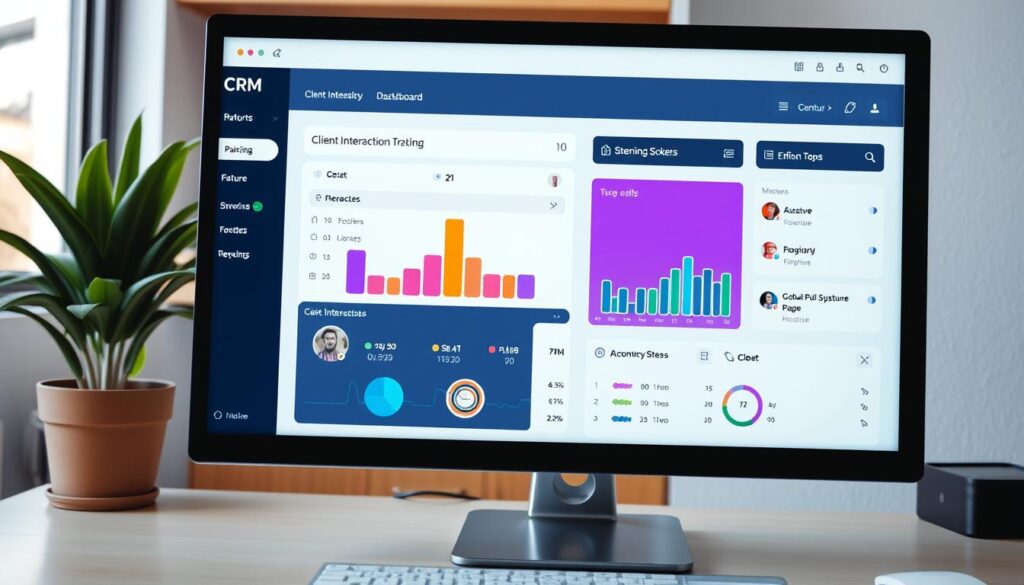Are you prepared for the potentially fraught world of renovation projects, where clear communication is key to avoiding costly misunderstandings?
Renovation projects can be complex, involving significant financial investment and taking several weeks, months, or even years to complete. As a result, your clients are highly invested in the success of their projects, making it crucial to manage their expectations effectively.
Effective expectation management is vital to prevent common issues like scope creep, budget overruns, and timeline disputes, ultimately leading to smoother renovation processes and better outcomes.
Key Takeaways
- Understand the importance of managing client expectations for successful renovation projects.
- Learn how to prevent common issues through effective expectation management.
- Discover key principles of effective client management.
- Explore the role of communication in successful client relationships.
- Recognise the benefits of setting realistic expectations from the outset.
Understanding the Importance of Client Expectation Management
Understanding and managing client expectations is essential for achieving success in renovation projects. When clients have clear and realistic expectations, the likelihood of project success increases significantly.
Why Client Expectations Matter in Renovation Projects
Client expectations directly impact the success of renovation projects. Client satisfaction is largely determined by how well the final result matches their initial expectations, rather than the objective quality of work. Unrealistic expectations can lead to strained relationships, payment disputes, and negative reviews, even when the technical work is sound. Effective management of client expectations is crucial to prevent such issues.
Common Challenges in Managing Client Expectations
Managing client expectations can be challenging due to various factors. Common issues include budget misconceptions, timeline misunderstandings, and design vision misalignment. Renovation shows on television often create unrealistic expectations about renovation timelines, budgets, and processes. Clients with no previous renovation experience may have particularly skewed expectations about what’s possible within their constraints.
| Challenge | Description | Impact |
|---|---|---|
| Budget Misconceptions | Clients may have unrealistic budget expectations. | Leads to financial disputes. |
| Timeline Misunderstandings | Clients may not understand the renovation timeline. | Causes delays and frustration. |
| Design Vision Misalignment | Clients’ design expectations may not align with reality. | Results in dissatisfaction with the final product. |
Managing expectations is an ongoing process throughout the entire renovation project, not just at the beginning. By understanding the importance of client expectation management, you can take steps to ensure successful project outcomes and maintain positive client relationships.
Establishing Clear Expectations from the Start
To ensure a smooth renovation process, it’s vital to set clear expectations with your clients from the outset. This involves having an open and transparent conversation about the project’s scope, timelines, and budgets. By doing so, you can avoid potential misunderstandings and ensure that both you and your clients are on the same page throughout the renovation journey.

Setting Realistic Goals and Timelines
Setting realistic goals and timelines is crucial in managing client expectations. You should work closely with your clients to understand their needs and priorities, and then create a project timeline that reflects these goals. It’s essential to be realistic about what can be achieved within the given timeframe and budget. Consider potential delays due to weather, material availability, and other common renovation challenges when setting project timelines.
Creating Detailed Initial Estimates and Proposals
A detailed initial estimate and proposal are vital in setting clear expectations with your clients. Your proposal should outline all aspects of the renovation project, including potential challenges and contingencies. This document will serve as a guide for both you and your clients throughout the project, ensuring that everyone is aware of the scope, timelines, and budgets. By creating a comprehensive proposal, you can help your clients understand what to expect and make informed decisions about their renovation.
Developing a Comprehensive Project Roadmap
A comprehensive project roadmap is essential in guiding your clients through each phase of the renovation process. This roadmap should outline the key milestones, timelines, and deliverables for the project. By having a clear plan in place, you can help your clients stay informed and engaged throughout the renovation journey. A well-planned roadmap also enables you to proactively address any potential issues that may arise, ensuring a smoother renovation process.
By following these steps, you can establish clear expectations with your clients and ensure a successful renovation project. It’s about being transparent, communicative, and proactive in managing client expectations.
Effective Communication Strategies for Managing Client Expectations in Renovations
Clear and consistent communication is key to managing client expectations throughout the renovation process. By keeping your clients informed, you can ensure that their expectations are met, and the project stays on track.
Establishing Reliable Communication Channels
To effectively manage client expectations, it’s crucial to establish reliable communication channels from the outset. This could be through regular phone calls, email updates, or using project management software. By making it easy for clients to reach you with questions or concerns, you can prevent misunderstandings and ensure a smoother renovation process.
Providing Regular Progress Updates
Providing regular progress updates is vital to keeping clients informed about the status of their renovation. This can be achieved through various means such as weekly or bi-weekly meetings, email updates, or using visual aids like photos and videos. By keeping clients in the loop, you can manage their expectations and build trust.
Documenting All Changes and Decisions
Documenting all changes and decisions is essential to prevent misunderstandings and disputes later in the project. This includes keeping a record of any changes to the original plan, decisions made, and agreements reached with the client. By maintaining accurate documentation, you can ensure that all parties are on the same page.
| Communication Strategy | Description | Benefits |
|---|---|---|
| Reliable Communication Channels | Establishing clear channels for client communication | Prevents misunderstandings, ensures smooth project flow |
| Regular Progress Updates | Keeping clients informed about project status | Manages client expectations, builds trust |
| Documenting Changes and Decisions | Maintaining accurate records of project changes | Prevents disputes, ensures all parties are informed |
By implementing these effective communication strategies, you can manage client expectations and ensure a successful renovation project. It’s about being proactive, transparent, and responsive to client needs.
Using Technology to Enhance Client Management
In today’s renovation industry, leveraging technology is crucial for effective client management. By adopting the right tools, you can streamline communication, improve transparency, and ensure that clients are always informed about project progress.
Project Management Software for Client Communication
Utilising project management software can significantly enhance client communication. Tools like those found in the UK construction project management software market allow you to share project timelines, updates, and track communications and approvals in one place. This centralised system helps prevent miscommunication and ensures that clients have access to the latest information.

CRM Tools for Tracking Client Interactions
CRM tools are designed to track client interactions, ensuring consistent and personalised communication. By using construction CRM software in the UK, you can maintain a record of all client interactions, preferences, and project details, enabling you to tailor your services to meet their specific needs.

Digital Reporting and Documentation Tools
Digital reporting and documentation tools make it easier to share project updates and maintain records. With construction reporting tools available in the UK, you can generate detailed reports on project progress, financials, and other key metrics, providing clients with a clear understanding of the project’s status.

For more insights on effective client management in construction, visit our comprehensive guide on effective client management strategies.
Handling Changes and Challenges During Renovations
Effective management of changes and challenges is essential to maintaining client trust during renovations. Renovation projects are complex and often encounter unforeseen issues that can impact the client’s expectations. As a renovation project manager, you must be prepared to handle these changes proactively.

Managing Budget Changes Transparently
Managing budget changes transparently is crucial to maintaining client trust. When changes occur, it’s essential to explain the reasons for the adjustments and provide options for clients. This can be achieved by implementing a change order process that clearly documents modifications to the original plan and their impact on the budget. For more information on managing client expectations, you can visit this resource.
Addressing Timeline Adjustments Proactively
Renovation project timelines can be affected by various factors, including weather conditions, material delivery delays, and labour shortages. To address timeline adjustments proactively, you should inform clients of schedule changes quickly and provide evidence for why they are necessary. This helps to avoid costly disputes and maintain client satisfaction.
Navigating Scope Changes and Client Requests
Scope changes and client requests are common during renovation projects. To navigate these changes effectively, you should establish a clear process for documenting and approving changes. This ensures that all stakeholders are aware of the changes and their impact on the project scope, budget, and timelines.
By managing changes and challenges proactively, you can maintain client trust and satisfaction throughout the renovation project.
Building Strong Client Relationships for Long-term Success
The key to a thriving renovation business lies in establishing and maintaining strong client relationships. As a renovation professional, you understand that the construction process can be stressful for clients, especially when living amidst the renovation chaos.
Developing Trust Through Transparency
Developing trust is fundamental to building strong client relationships. Being transparent about the renovation process, timelines, and potential issues helps to foster this trust. By keeping clients informed, you demonstrate your commitment to their project’s success and show that you’re proactive in managing client expectations.
Soliciting and Responding to Client Feedback
Soliciting feedback throughout the renovation process is crucial for ensuring client satisfaction. Regularly checking in with clients and responding to their concerns shows that you value their input and care about their experience. This proactive approach to client feedback helps to identify and resolve issues promptly, reducing the likelihood of misunderstandings and disputes.
Creating Positive Client Experiences Despite Challenges
Renovation projects inevitably encounter challenges, but it’s how you respond that matters. By empathizing with clients, actively listening to their concerns, and providing solutions, you can turn potentially negative experiences into positive ones. Exceeding expectations in small ways, such as surprising them with a beautifully finished detail or ensuring timely communication, can significantly enhance their overall satisfaction with the renovation process.
By focusing on building strong client relationships through trust, feedback, and positive experiences, you can drive long-term success in your renovation business and establish a reputation for exceptional client management.
Conclusion
The key to a successful renovation lies in understanding and managing client expectations. By implementing effective communication strategies and leveraging advanced tools, you can ensure project success and enhance client satisfaction.
To achieve this, focus on establishing clear expectations from the outset, maintaining transparent communication channels, and utilising technology to streamline client management. Regular progress updates and detailed documentation are crucial in keeping clients informed and preventing misunderstandings throughout the renovation process.
By adopting these strategies, you can foster strong client relationships, drive long-term success, and differentiate your business in the competitive construction industry. Effective client expectation management leads to repeat business, positive referrals, and a strong reputation. As the industry continues to evolve, prioritising client experience will be essential for staying ahead.


